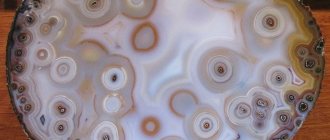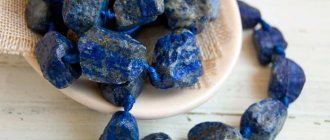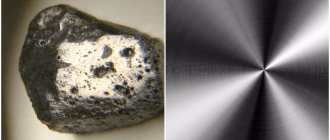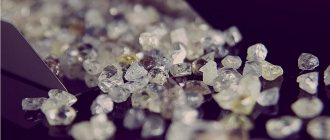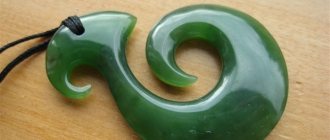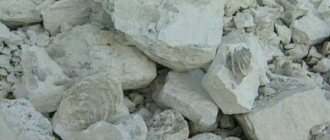Limestone composition
The chemical composition of pure limestones is close to calcite, where CaO is 56% and CO2 is 44%. Limestone in some cases includes admixtures of clay minerals, dolomite, quartz, less often gypsum, pyrite and organic residues, which determine the name of limestone. Dolomitized limestone contains from 4 to 17% MgO, marly limestone - from 6 to 21% SiO2 + R2O3. The sandy and silicified limestone contains admixtures of quartz, opal and chalcedony. It is customary to reflect in the name of limestone the predominant presence of organogenic remains (bryozoan, algal), or its structure (crystalline, clotty, detritus), or the shape of rock-forming particles (oolitic, brecciform).
Table
Now we can give a clear answer to the question of what is the difference between lime and chalk. The table below summarizes what these materials have in common and how they differ.
Brockhaus Biblical Encyclopedia. F. Rinecker, G. Mayer. 1994.
Limestone - see Lime, limestone ... Brockhaus Biblical Encyclopedia
Air building lime is a product of calcination (until carbon dioxide is removed) of carbonate calcium-magnesium rocks such as chalk, limestone, shell rock, dolomitized limestone, which contain up to 6% clay impurities. Air lime... ... Encyclopedia of terms, definitions and explanations of building materials
Lime (disambiguation) - Lime: Slaked lime Ca(OH)2. Quicklime CaO. Bleached lime Ca(Cl)OCl. Soda lime is a mixture of NaOH and slaked lime Ca(OH)2. See also Limestone (Calcium Carbonate) CaCO3 ... Wikipedia
Lime - (from Greek ἄσβεστος "unquenchable"): Lime (material) is a material obtained by burning carbonate rocks (limestone, chalk), consisting mainly of CaO and MgO. Slaked lime Ca(OH)2. Quicklime CaO. Chlorine... ...Wikipedia
Limestone is a sedimentary rock, chemical composition: calcium carbonate CaCo3; used as a facing material (for example, in plinths), for the manufacture of cornice slabs, blocks for stands, intermediate blocks in column trunks, ... ... Encyclopedia of terms, definitions and explanations of building materials
Kent limestone is a hard limestone quarried in Kent and used for exterior cladding. Term heading: Finishing materials Encyclopedia headings: Abrasive equipment, Abrasives,... ... Encyclopedia of terms, definitions and explanations of building materials
Lime in technology - is extracted by burning natural limestones; in practice it represents one of the most important service materials in the construction industry and many technical industries. This article discusses: 1) General relations and properties... Encyclopedic Dictionary F.A. Brockhaus and I.A. Efron
Lime - I (technical) is extracted by burning natural limestones; in practice it represents one of the most important service materials in the construction industry and many technical industries. This article discusses: 1) General relations and... Encyclopedic Dictionary F.A. Brockhaus and I.A. Efron
Description and types
Based on their structure, limestones are distinguished as crystalline, organogenic-clastic, detrital-crystalline (mixed structure) and sinter (travertine). Among crystalline limestones, based on the size of the grains, they are distinguished into coarse, fine, and cryptocrystalline (aphanitic), and based on the shine on the fracture - recrystallized (marble) and cavernous (travertine). Crystalline limestone is massive and dense, slightly porous; travertine - cavernous and highly porous. Among the organogenic-clastic limestone, depending on the composition and size of the particles, they are distinguished: reef limestone; shell limestone (shell rock), consisting mainly of whole or crushed shells held together by carbonate, clay or other natural cement; detritus limestone composed of shell fragments and other organogenic fragments cemented by calcite cement; algal limestone. Organogenic-clastic limestones also include white (so-called writing) chalk. Organogenic-clastic limestones are characterized by large porosity, low volumetric mass and are easy to process (sawn and polished). Clastic-crystalline limestone consists of carbonate detritus of various shapes and sizes (lumps, clots and nodules of fine-grained calcite), with the inclusion of individual grains and fragments of various rocks and minerals, lenses of chert. Sometimes the limestone is composed of oolitic grains, the cores of which are represented by fragments of quartz and flint. They are characterized by small pores of different shapes, variable volumetric mass, low strength and high water absorption. Sinter limestone (travertine, calcareous tuff) consists of sinter calcite. It is characterized by cellularity, low volumetric mass, and is easy to process and saw.
According to the macrotexture and bedding conditions, limestones are classified as massive, horizontally and obliquely layered, thick and thin slabbed, cavernous, fractured, spotted, lumpy, reef, pound, stylolite, underwater landslide, etc. Based on their origin, they are classified as organogenic (biogenic), chemogenic, clastic and mixed limestones. Organogenic (biogenic) limestones are accumulations of carbonate remains or entire skeletal forms of marine, less often freshwater, organisms, with a small admixture of predominantly carbonate cement. Chemogenic limestones arise as a result of the precipitation of lime followed by recrystallization of the carbonate mass of sediments, mainly from sea water (crystalline limestone) or from deposits from mineralized sources (travertine). Clastic limestones are formed as a result of fragmentation, washout and redeposition of angular-rounded fragments of carbonate and other rocks and skeletal remains, mainly in marine basins and on the coasts. Limestones of mixed origin are a complex of deposits resulting from the sequential or parallel superposition of various processes of formation of carbonate sediments.
The color of limestones is predominantly white, light gray, yellowish; the presence of organic, ferrous, manganese and other impurities causes dark gray, black, brown, reddish and greenish coloring.
Limestone is one of the most widespread sedimentary rocks; it composes various landforms of the Earth. Limestone deposits are found among sediments of all geological systems - from Precambrian to Quaternary; the most intensive formation of limestones occurred in the Silurian, Carboniferous, Jurassic and Upper Cretaceous; make up 19-22% of the total mass of sedimentary rocks. The thickness of the limestone strata is extremely variable: from a few centimeters (in individual layers of sediments) to 5000 m.
Formation of sedimentary rocks
Igneous rocks located on the surface of the earth, under the influence of changes in temperature and humidity, are gradually covered with a network of thin cracks that loosen the upper layers. Water freezing in cracks, increasing in volume, expands them, and the rock gradually breaks up into separate pieces and grains (sand).
This process, sometimes enhanced by the action of wind, is called physical “weathering” of the rock. The surface area of pieces of stone and grains of sand exposed to the atmosphere and water is much larger than the surface of the original massive rock, which increases the destructive effect of the environment. The most powerful effect is water with carbon dioxide and oxygen dissolved in it. For example, granite, under the influence of temperature fluctuations and the action of water containing carbon dioxide, is destroyed, forming natural crushed stone, sand (mainly quartz) and clay.
Flowing waters carry away crushed stone, sand, clay and other formed substances, and then deposit them in a new place, sorting insoluble particles by size. The removed soluble substances are subsequently deposited from supersaturated solutions during the evaporation of water or under other special conditions. Natural crushed stone is abraded by the movement of water or ice and turns into more or less rounded gravel.
Properties of limestone
The physical and mechanical properties of limestone are extremely heterogeneous, but are directly dependent on their structure and texture. The density of limestone is 2700-2900 kg/m3, varies depending on the content of impurities of dolomite, quartz and other minerals. The volumetric mass of limestones varies from 800 kg/m3 (for shell rocks and travertine) to 2800 kg/m3 (for crystalline limestones). The compressive strength of limestone ranges from 0.4 MPa (for shell rock) to 300 MPa (for crystalline and aphanitic limestone). When wet, the strength of limestones often decreases. Most deposits are characterized by the presence of limestones that are not uniform in strength. Losses due to wear, abrasion and crushability increase, as a rule, with a decrease in the volumetric mass of limestone. Frost resistance for crystalline limestones reaches 300-400 cycles, but changes sharply for limestones of a different structure and depends on the shape and connection of pores and cracks in it. The workability of limestones has a direct connection with their structure and texture. Shell rock and porous limestone are easy to saw and trim; crystalline limestones are well polished.
Main characteristics
Main characteristics
Eco-friendly shell stone has a neutral radiation background - about 13 μg/h, protects against polluted air and various harmful radiations. One of its most valuable advantages over other building materials is its resistance to rodents, which is extremely important for suburban housing.
Additionally, it is worth noting the following material characteristics:
- thermal conductivity – 0.5 W/m2;
- water absorption – 15%;
- number of freezing-thawing cycles – 25;
- density – 2,100 kg/m3;
- excellent diffusion parameters (due to the porous structure);
- excellent filtering ability;
- It is not subject to rotting or corrosion at all.
Important! The shell rock block has excellent heat and sound insulation properties. When using it, the walls of buildings do not need to be protected from extraneous noise or heavily insulated.
The low thermal conductivity of shell rock walls provides the room with comfortable warmth in winter and refreshing coolness in summer Source stroy-podskazka.ru
Application of limestone
Limestone has universal applications in industry, agriculture and construction. In metallurgy, limestone serves as a flux. In the production of lime and cement, limestone is the main component. Limestone is used in the chemical and food industries: as an auxiliary material in the production of soda, calcium carbide, mineral fertilizers, glass, sugar, and paper. It is used in the purification of petroleum products, dry distillation of coal, in the manufacture of paints, putties, rubber, plastics, soap, medicines, mineral wool, for cleaning fabrics and treating leather, and liming soils.
Limestone is the most important building material; it is used to make facing slabs, wall blocks, sculptural and architectural-building products, crushed stone for the production of concrete and asphalt concrete, railway ballast, road bases and surfaces, filters for hydraulic structures, as rubble stone for foundations, paving slopes, sides etc. Slightly cracked soft limestone is often sawn into blocks directly from the massif using various stone-cutting machines. Such limestones (saw limestones) are especially valuable as building materials.
Marking
Based on the density of the material, the following brands of shell stone are distinguished:
- M15. Contains large pores, is quite loose in appearance, comes in various shades, but is often yellow. Because of the latter, it is sometimes called “yellow”. The yellowish color is given by sand additives, which have greater thermal conductivity than shell limestone. This building material is considered the coldest. If such a block is hit on a solid base, it will instantly fall apart. The average weight of the M15 is relatively small (about 11 kg). During loading and unloading operations, the outer layer of elements is often damaged. To completely get rid of the resulting defects, the damaged surfaces need to be plastered. Such products are successfully used in the construction of bathhouses, garages, non-residential buildings, and decorative fences.
- M25. It has moderate porosity and medium density. The predominant shades are light yellow and sand. When dropped, it often splits into two parts, but sometimes into three. Such products are very popular in construction, especially for the construction of buildings with several floors. This is due to the fact that they are stronger than brick, foam and aerated concrete. The weight of such a block is approximately 16 kg.
- M35. The most dense and durable brand with minimal porosity. The color of the slabs is almost white, sometimes with a yellowish tint. This is the heaviest shell rock (24 kg), making it perfect for building a basement, foundation, or plinth.
Brands of shell rock are designated in accordance with the normative act GOST 23009-78 Source i0.wp.com
Limestone deposits
Limestone deposits are widespread in the CCCP, especially in the Central Economic Region, the North Caucasus, the Volga region, the Baltic States, the Crimea, the Moldavian CCP, the Azerbaijan CCP, etc. The main deposits developed in the CCCP: Afanasyevskoye (Moscow region) - white limestone used for production cement; Barsukovskoe (Tula region) - fluxed limestone; Guryevskoye (Venevskoye) deposit (Tula region) - dense limestone used for crushed stone; Oknitskoe (Moldavian CCP) - shell-oolitic limestone for the production of sawn wall blocks; Bodraksko-Alminskoe (Crimea) - soft white shell sawn limestone for the manufacture of facing and wall materials; Shakhtakhtinskoe (Azerbaijan CCP) - grayish-yellow and light brown sawn cavernous travertine limestone for facing slabs; Zhetybai (Mangyshlak Peninsula, Kazakh CCP) - pink, light gray, cepo-yellow porous shell sawn limestone for facing slabs.
Making shell block
The material is extracted using the quarry method using special devices that cut rock layers. In the same quarry, the color and structure of the stones are different: they depend on the depth of the deposit.
Despite its high strength, shell limestone is easy to saw with a hand saw. Therefore, if necessary, you can always obtain elements of the required sizes. In addition, the production of decorative parts of various shapes is available. Standard dimensions of shell rock blocks are 180x180x380 or 200x200x400 mm. After processing such products, various surfaces are obtained: sawn, slightly rough, polished.
Extraction of shell rock is carried out in several stages: first, excavation equipment clears the surface from soil, then a machine with a cutter cuts layers of shell rock to the required thickness Source nesiditsa.ru
“Attractive” qualities of shell stone
- Natural shell rock is considered an inert substance, since it is completely indifferent to its proximity to other building materials.
- You can safely cover flights of porch stairs and terraces with shell rock, without fear that the coating will soon deteriorate - this dense and hard substance has a decent abrasion life.
- Limestone is not afraid of fire and is heat resistant.
- The rock, unlike many other building materials, creates a positive background for human health. Shell rock enriches the space around itself with iodine and salt ions and is known for its bactericidal properties. In the “four walls” made of shell rock, you feel a surge of energy, the overall immunity of the body increases, and nervousness disappears.
- Thanks to the air layers in the structure, shell rock has a low thermal conductivity and excellent sound insulation.
- Stone processing is not a labor-intensive process. If desired, you can cut stone slabs to any size. The material can even be cut with a hand saw. In addition, the surface of shell rock does not require special leveling - thanks to its porous structure, it is leveled under the pressure of the fastening mortar.
- Shell rock is a one-of-a-kind durable protective barrier against radiation. The natural background radiation level of the stone itself is 13 micrograms/hour. Such a low indicator is considered neutral.
- The breed absorbs particles of pathogenic substances well.
- Dampness will never settle in a shell rock room - the frost-resistant material will last about 70 cycles. The rock has a “breathable” structure, which is why excess moisture does not stay there, and the shell rock itself remains strong and unharmed for a long time.
- The price of shell rock is acceptable for any wallet.
- There is no doubt about the 100% level of environmental friendliness of the material.
However, no matter how solid the list of positive qualities of shell rock may be, nothing lasts forever, therefore, in order to maximize the service life of the stone, at the end of the construction process it is treated with a special dirt- and water-repellent solution. If the facade of the building “looks” onto a busy street, you cannot do without an oil-hydrophobic solution.
